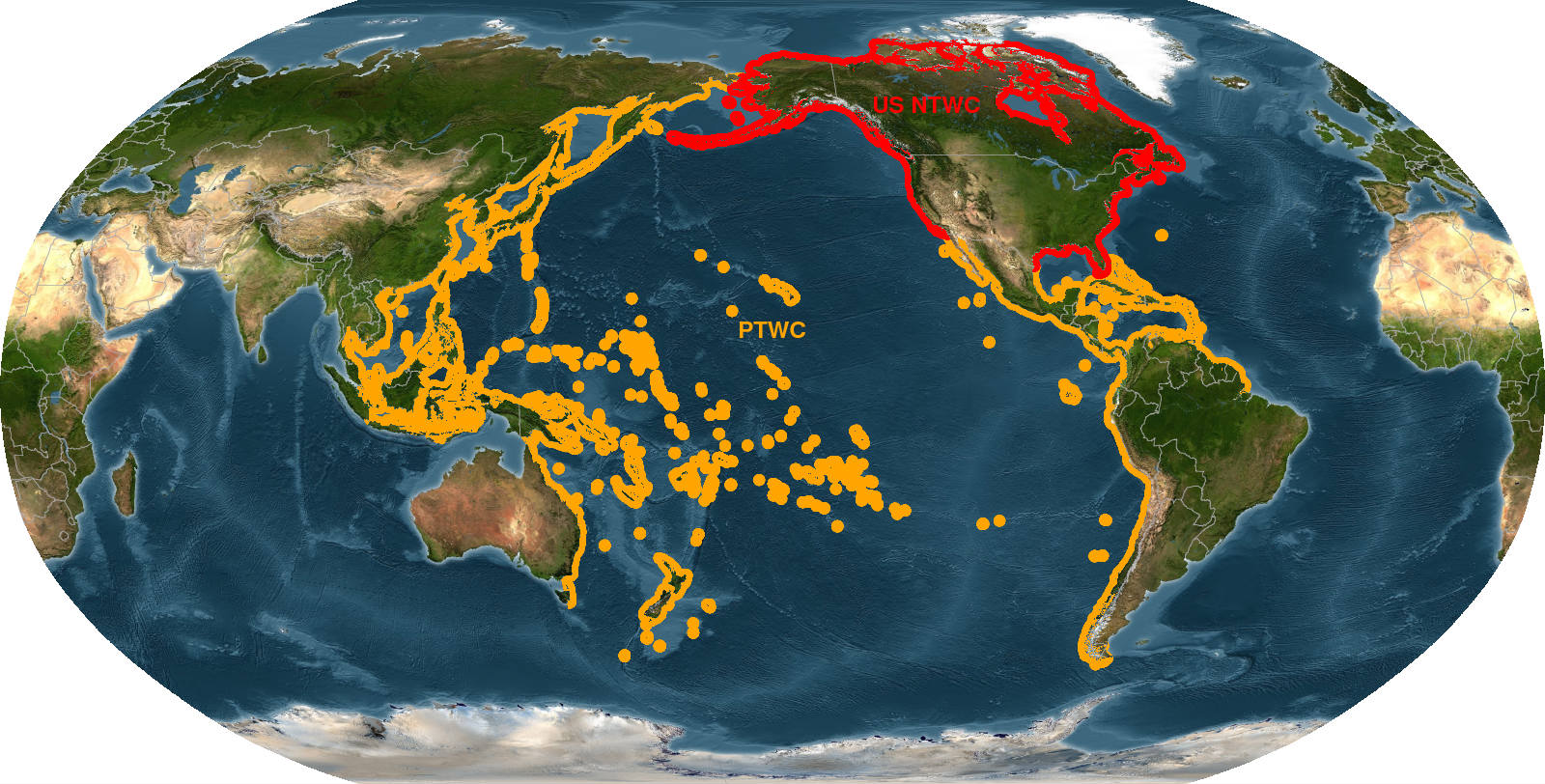
A multi-day severe weather outbreak is expected in the Mississippi Valley into the Lower Ohio Valley this afternoon into Saturday and through the Central Gulf states on Saturday. Significant tornadoes, widespread damaging winds, and large hail are likely. Strong winds, low relative humidity, and dry fuels will bring extremely critical fire weather conditions to the Southern Plains today. Read More >
National Tsunami Hazard Mitigation Program
National Program
 The National Tsunami Hazard Mitigation Program (NTHMP), a part of the National Weather Service's Tsunami Program, is a coordinated U.S. national effort to mitigate the impact of tsunamis through public education, community response planning, hazard assessment, and warning coordination.
The National Tsunami Hazard Mitigation Program (NTHMP), a part of the National Weather Service's Tsunami Program, is a coordinated U.S. national effort to mitigate the impact of tsunamis through public education, community response planning, hazard assessment, and warning coordination.
Contact Us at: nws.tsunamigrants@noaa.gov
| TsunamiReady | Outreach & Education | Tsunami Simulation | Maps | |
 |
 |
 |
 |
 |
The 2024 NTHMP Annual Report is now available. Thank you to Jon Allan for taking the lead the effort this year, and to all of our partners for their dedication and contributions to the mission of the NTHMP.
TsuInfo Alert is a bi-monthly newsletter that links scientists, emergency responders, and community planners to the latest tsunami research. This newsletter is published by the Washington Department of Natural Resources, Washington Geological Survey on behalf of the National Tsunami Hazard Mitigation Program, a state/federal partnership funded through the National Oceanic and Atmospheric Administration. It is made possible by a grant from NOAA's National Weather Service via the Washington Military Department, Division of Emergency Management.
The NWS Tsunami Program has also created a Bi-Monthly Newsletter as a way to communicate some NTHMP administrative information as well as work being done from the the NWS Tsunami Program.
Learn more about Tsunami Warning Centers and tsunami safety (Click on images)
 |
 |
US Dept of Commerce
National Oceanic and Atmospheric Administration
National Weather Service
National Tsunami Hazard Mitigation Program
,
Comments? Questions? Please Contact Us.
Thank you for visiting a National Oceanic and Atmospheric Administration (NOAA) website. The link you have selected will take you to a non-U.S. Government website for additional information.
NOAA is not responsible for the content of any linked website not operated by NOAA. This link is provided solely for your information and convenience, and does not imply any endorsement by NOAA or the U.S. Department of Commerce of the linked website or any information, products, or services contained therein.
You will be redirected to:

